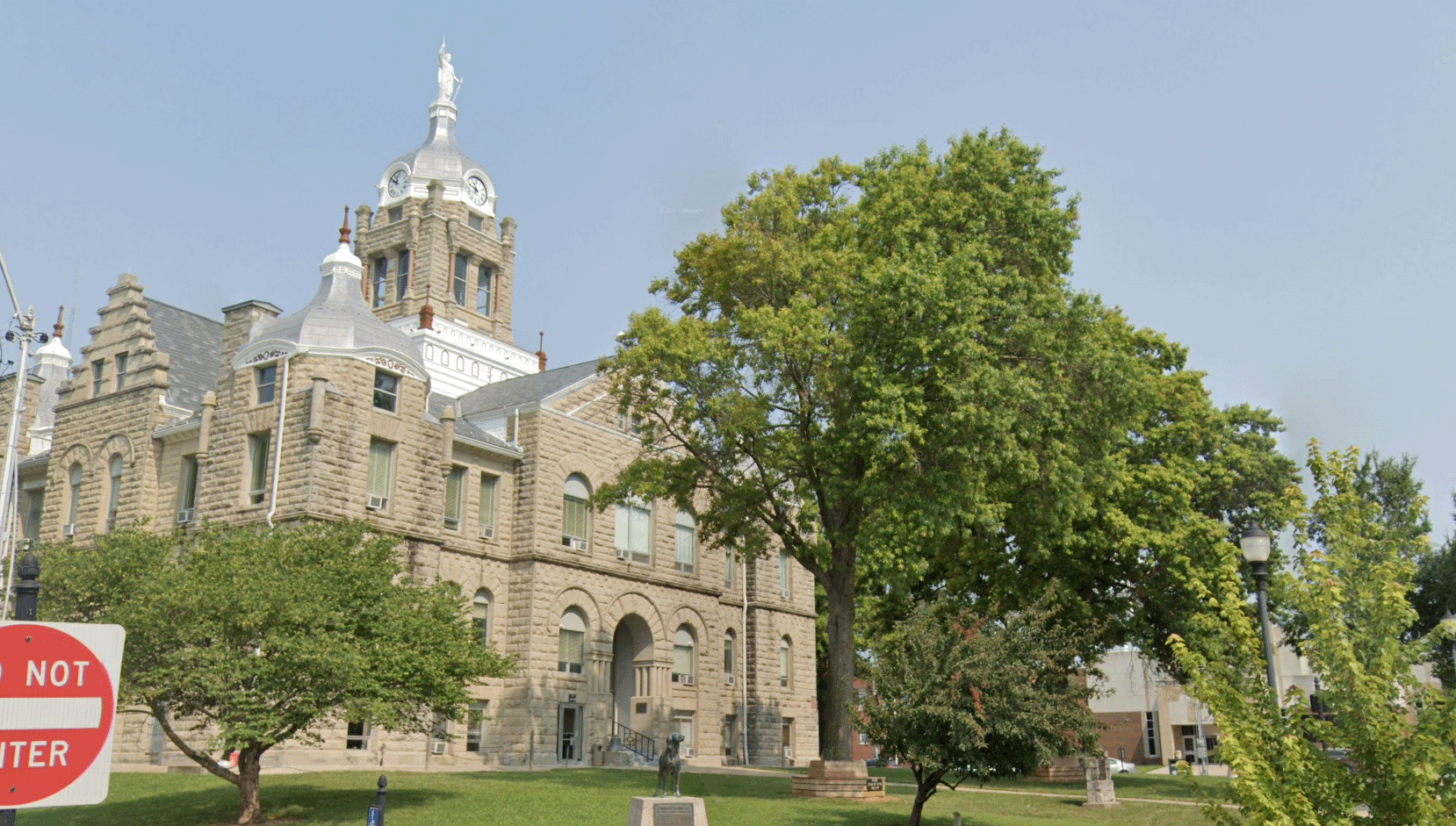Significant as a seat of county government since its completion in 1898, the Johnson County Courthouse is an impressive local rendering of the Richardsonian Romanesque style which dominated courthouse architecture in Missouri in the late 19th and early 20th centuries. The oldest of four Missouri courthouses designed by architect George E. McDonald, the Johnson County Courthouse. For 96 years, the richly-detailed building has served as the political and geographic focus of Johnson County, housing various governmental and other public functions at the county level within its massive sandstone walls. Erected on high ground and with virtually no competition above the trees, the building’s goddess-topped clock tower and elaborate roofline are visible for several miles.
HISTORY
Significant as a seat of county government since its completion in 1898, the Johnson County Courthouse is an impressive local rendering of the Richardsonian Romanesque style which dominated courthouse architecture in Missouri in the late 19th and early 20th centuries. The oldest of four Missouri courthouses designed by architect George E. McDonald, the Johnson County Courthouse. For 96 years, the richly-detailed building has served as the political and geographic focus of Johnson County, housing various governmental and other public functions at the county level within its massive sandstone walls. Erected on high ground and with virtually no competition above the trees, the building’s goddess-topped clock tower and elaborate roofline are visible for several miles.
FUN FACTS
While the building was still under construction in 1897, members of the community secretly paid and demanded that the golden ball on the end of the Goddess statue’s staff be changed to silver. The golden color was described in the newspaper as an “unhallowed badge of the money power.”
The statue that sits on the top of the courthouse building is Minerva, Roman goddess of wisdom. Over the years, the statue suffered damage from exposure to the elements and from a bullet. In August 1995, the sculpture underwent restoration, in conjunction with repairs to the courthouse roof and tower. A light was removed from the top of Minerva’s head and the staff in her proper right hand was turned into a spear. Jim Myers (a sculptor) was responsible for the reconstruction and was assisted by J. C. Carter, who sandblasted the sculpture, and Richard Adams, of Adams Welding and Manufacturing, who did the welding and helped reinforce the base. In addition, sections of the sculpture were bolted together, rivets were put into the sword, the inside support was repaired and some areas filled. The old paint was removed and the sculpture was epoxied, and painted with automotive paint and clear sealant.” In 2017 the statue underwent another round of cleaning and painting.
The courthouse clock was added to the building a year after construction was completed. The original clock had glass, then later wooden hands, and mechanisms run by weights, rather than springs. These weights include a “time weight” of 500 pounds and a “striking weight” of 700 pounds. The striking weight had to be wound every six days.
In 1996, the courthouse opened a time capsule that had been buried during the 1896 construction. This time capsule contained nine newspapers from the week of August 20, 1896. It also contained a Gray Reunion poster and ribbon, a list of city officials, a roll of the 1896 Johnson County Bar, and three coins from that period. There was also an unopened envelope from the Masonic Lodge, which was given to the family.
The courthouse has been struck by lightning at least four times: twice before 1928, once in 1940, and once in 1945.
In 1902, a storm tore the extended arm from the Goddess statue. When employees repaired her, they discovered a deposit of honey left by a swarm of bees.
The Johnson County Courthouse measures 84′ x 104′ and 110′ from the ground to the top of the three-story central tower (not counting the metal statue, which adds approximately 10 feet to the end of the outstretched arm.
ARCHITECTURE
This three and one-half story courthouse was built with Romanesque Revival style architecture. It features a stone foundation and cladding and a complex asphalt shingle roof. This roof includes a central hipped section, lower cross gables on each slope, multi-sloped turrets at each corner, and a central bell tower. Symmetrical rectangular and round-arched windows and doors surround the building, featuring non historic sashes. The building has several other Romanesque features such as stepped parapets, stone belt courses, and grouped columns. The Goddess of Liberty proudly holds her staff atop the bell tower.





